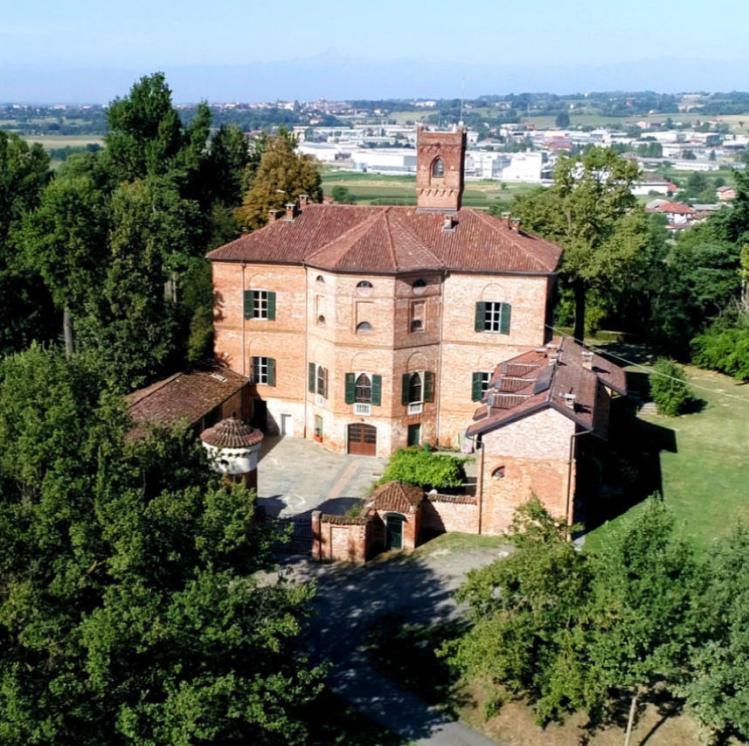Find out more about the birthplace of our Winery!
The first written memory of the town dates back to 992; it is contained in a diploma from Emperor Otto III confirming many possessions including Andesellum to the Monks of the Abbey of Breme, formerly of Novalesa. It is hypothesized that there were settlements already present in Roman and perhaps pre-Roman times. This hypothesis was confirmed by casual excavations which brought to light on the hills of Andio, San Giorgio and in the plain towards Chieri numerous sherds of lithic material, pottery of different types, a tile with a kiln stamp, some bottoms of cinerary vases and two coins.
At the beginning of the Middle Ages the territory was mainly organized into ecclesiastical monastic cells dependent on: the Abbey of Breme, the Abbey of Nonantola, the Chapter of Canons of Turin, the Abbey of Fruttuaria of San Benigno Canavese and nobles and local freedmen.
In 1234 the Counts of Biandrate di San Giorgio, already owners of the nearby castle of Cesole, allies of the Marquis of Monferrato, also became lords in Andezeno, but their lordship, in contrast with the interests and ambitions of the free Municipality of Chieri, brought them to war in 1253.
After numerous large and small conflicts that lasted for years, peace was made in 1260, called in castro Andexelli.
In 1290 the Biandrates lost interest in the place and resigned themselves to selling it to the Chieresi for 2,000 abstain lire; in December of that year 115 heads of families swore loyalty to Chieri. Subsequently the place became part of the free Municipality of Chieri and its dominion, although it enjoyed a certain administrative autonomy with its own council and podestà. He followed the events of Chieri and in 1347 he dedicated himself to the House of Savoy. In December 1543 it was totally destroyed by the Spanish army with the aim of expelling the French army which had occupied the place and was threatening Chieri.
Subsequently, the Balbiano Counts and other local nobles boasted feudal rights for the collection of the "rate".
With the Napoleonic occupation it was included in the Po department and was part of the Riva district near Chieri until the unification of Italy.
Built between 1753 and 1759 and consecrated in 1764, the Church is the work of the Lugano architect Giovan Battista Casasopra, a student of Vittone and active at the Palazzina di Caccia di Stupinigi. The inauguration took place on 28 October 1764, the day of Saint Justina, with the transport of the saint's body. The church was named after San Pietro, San Giorgio and Santa Giustina.
The imposing baroque building has a single rectangular nave with six chapels, three on each side, communicating, all in exposed brick and stands on the top of the hill overlooking the town. The search for verticality prevails, implemented with the superposition of two narrow and high orders of pilasters and columns crowned by a triangular pediment. The interior is a single, rectangular nave, with three interconnecting chapels on each side, separated by large pillars. Under the monumental high altar, dominated by a large crucifix, inside a large wooden urn sculpted and gilded by Giuseppe Antonio Riva, the relics and body of St. Justina, protector of the fruits of the earth, are kept.

This is the original nucleus of Andezeno located on the hill overlooking the area and which from Via Abate Villa allows access to a valuable panoramic point.
VILLA SIMEOM
Built in the first half of the 19th century, Villa Simeom enjoys over seven hectares of parkland and six hundred square meters of original period rooms, now dedicated to the promotion of cultural events. Residence for generations of the Simeom family, here the most important testimonies of subalpine history were collected and archived, contained in the collection of the same name, born from the passion and patient dedication of the collector Silvio Simeom, today preserved and available for consultation in the historical archive of the Municipality of Turin .
Today Villa Simeom appears to be a magical place where time seems to have stopped, thanks to the authenticity of the furnishings, frescoes, paintings and every detail that characterizes it inside.
Villa Simeom maintains the original name found on the ancient military maps of the Chieri area, dating back to the first half of the 19th century. The name dates back to the Simeom family, an important lineage established in Chieri and its surroundings since the 13th century.


